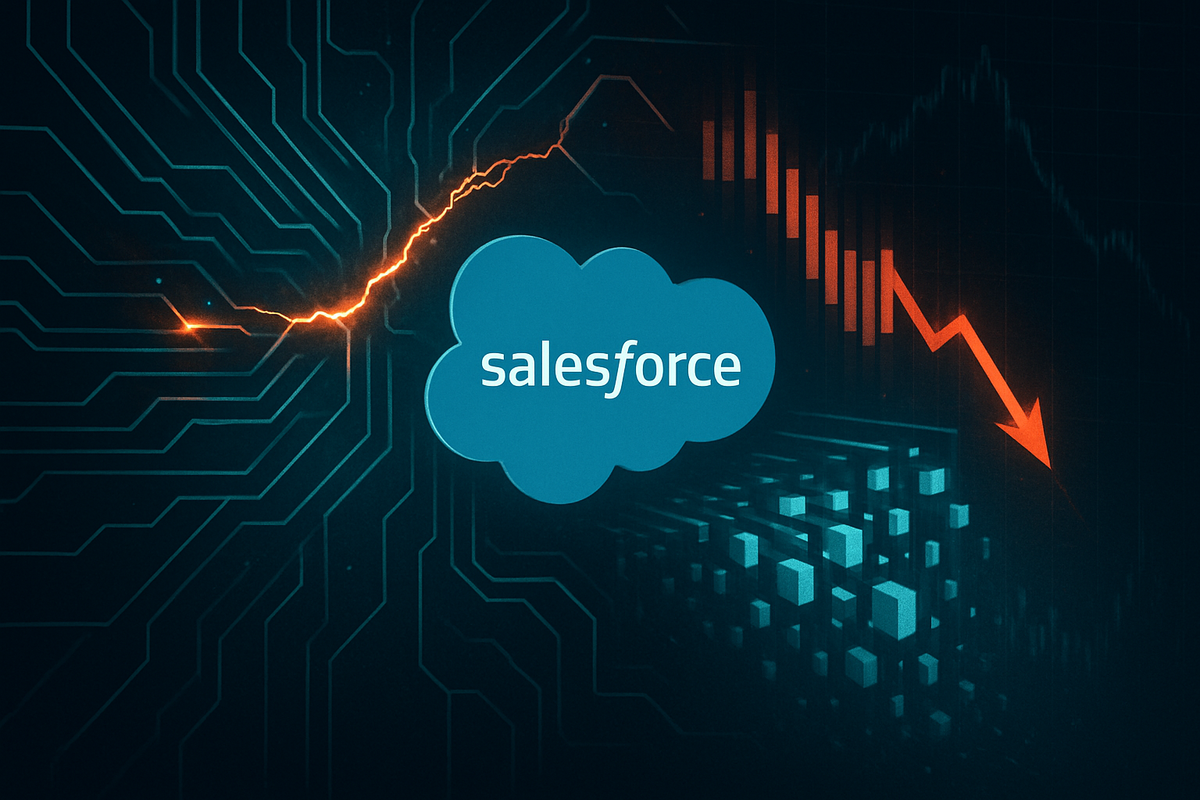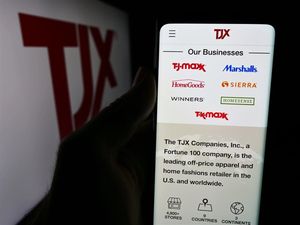
A formidable consortium of hacking groups, operating under the ominous banner of "Scattered LAPSUS$ Hunters" and linked to notorious cybercrime syndicates like ShinyHunters, Lapsus$, and Scattered Spider, has sent shockwaves through the financial markets. They credibly claim to have exfiltrated an astonishing 1 to 1.5 billion records from various customer databases reliant on Salesforce (NYSE: CRM), the global leader in cloud-based software. With a ransom deadline looming on October 10, 2025, the incident casts a long shadow over Salesforce's security posture and threatens significant repercussions for a vast array of public companies and their clientele.
This alleged breach, which Salesforce insists did not compromise its core platform but rather targeted customer instances through sophisticated social engineering, highlights the escalating challenges of third-party vendor security and the intricate web of dependencies in modern enterprise IT. As the market digests the scale of the potential data theft and the legal actions already underway, investors are keenly watching the unfolding drama, assessing the immediate and long-term implications for Salesforce's stock, its extensive customer base, and the broader cybersecurity landscape.
Unpacking the Breach: A Deep Dive into the Salesforce Saga
The alleged data theft, attributed by Google Threat Intelligence (GTI) to groups UNC6040 and UNC6395, reportedly began with the exploitation of a vulnerability as early as August 2025. The attackers specifically leveraged compromised OAuth tokens from third-party integrations, particularly the Salesloft Drift AI marketing tool, which seamlessly integrates with Salesforce. Between August 8 and August 18, 2025, these sophisticated cybercriminals employed social engineering tactics, including highly targeted phishing attacks, to manipulate employees. These tactics tricked individuals into either linking a malicious OAuth application to their company's Salesforce instance or stealing their credentials and multi-factor authentication tokens. This illicit access granted the hackers API-level entry to Salesforce customer data, enabling them to exfiltrate a staggering volume of records without directly breaching Salesforce's foundational platform.
The "Scattered LAPSUS$ Hunters" collective has since launched a new data leak site, listing dozens of major global companies as alleged victims. The stolen data reportedly encompasses a treasure trove of personally identifiable information (PII), including customer profiles, contact lists, loyalty program details, internal business data, names, addresses, dates of birth, driver's license numbers, and even partial Social Security numbers. The group has issued an ultimatum, demanding a ransom payment by October 10, 2025, to prevent the public release of this sensitive data from over 700 major companies. They have also explicitly called for Salesforce itself to pay a ransom to protect the privacy of all impacted customers.
Salesforce (NYSE: CRM) has responded by asserting that its broader platform was not compromised and that the incident is not due to any inherent vulnerability within its technology. The company has characterized the extortion activities as being linked to "prior or unconfirmed events" and has maintained that the attacks primarily relied on social engineering and end-user manipulation. While denying a direct breach of its core system, Salesforce has acknowledged that its customers' instances have been targeted and is actively assisting affected clients. This stance, however, has not deterred legal action, with at least 14 lawsuits, including proposed class actions, already filed against Salesforce in the Northern California District Court, alleging negligence and various violations of privacy and consumer protection laws.
Market Movers: Winners and Losers in the Wake of the Breach
The implications of this colossal data breach claim are far-reaching, creating a distinct set of potential winners and losers in the financial markets. At the forefront of the potential losers is Salesforce (NYSE: CRM) itself. Despite its insistence that its core platform remains secure, the sheer scale of the alleged data theft from its customer databases poses a severe threat to its reputation and customer trust. The ongoing wave of negligence lawsuits will undoubtedly incur significant legal costs and could lead to substantial financial penalties. A decline in customer confidence could translate into slower subscription growth, increased churn, and a potential hit to its stock price as investors re-evaluate the perceived security of its cloud offerings.
Numerous public companies identified as affected by the breach face immediate and substantial challenges. These include giants like Google (NASDAQ: GOOGL), FedEx (NYSE: FDX), UPS (NYSE: UPS), Toyota (NYSE: TM), Stellantis (NYSE: STLA), Adidas (XTRA: ADS), Disney (NYSE: DIS) (specifically its Hulu division), Home Depot (NYSE: HD), TransUnion (NYSE: TRU), and Cisco (NASDAQ: CSCO), along with luxury brands such as Kering (EPA: KER), Louis Vuitton, Dior, Chanel, and Tiffany & Co. These companies will likely incur significant costs for investigating and remediating the breaches, complying with stringent regulatory notification requirements, and facing potential legal action from affected individuals. The reputational damage from having customer data compromised, regardless of the ultimate culprit, could lead to customer exodus and a negative impact on their brand equity and market valuation. Farmers Insurance, for example, has already reported a data breach impacting over 1 million customers, linked to a third-party vendor believed to be Salesforce.
Conversely, the cybersecurity sector could see a surge in demand, positioning several firms as potential beneficiaries. Companies specializing in identity and access management (IAM), endpoint security, security information and event management (SIEM), and incident response services may experience increased business. While some cybersecurity firms like CyberArk (NASDAQ: CYBR), Proofpoint (NASDAQ: PFPT), Palo Alto Networks (NASDAQ: PANW), Zscaler (NASDAQ: ZS), Tenable (NASDAQ: TENB), Elastic (NYSE: ESTC), JFrog (NASDAQ: FROG), Nutanix (NASDAQ: NTNX), Qualys (NASDAQ: QLYS), Rubrik (NYSE: RBRK), and Cato Networks are also reportedly among the affected, the broader industry may benefit from a renewed corporate focus on enhancing cybersecurity defenses and reducing third-party risk. Companies offering robust security solutions for cloud environments and third-party integrations, in particular, could see an uptick in sales as businesses scramble to prevent similar incidents.
Broader Implications: A Shifting Cybersecurity Landscape
This alleged Salesforce breach is more than an isolated incident; it's a stark illustration of broader industry trends and the evolving threat landscape in an increasingly interconnected digital world. The reliance on third-party integrations and APIs, while fostering innovation and efficiency, simultaneously introduces significant attack vectors. This event underscores the critical need for robust vendor risk management frameworks and stringent security vetting processes for all integrated applications. It highlights that even when a core platform like Salesforce maintains its integrity, vulnerabilities in its ecosystem can be exploited to devastating effect.
The potential ripple effects extend far beyond the directly affected companies. Competitors in the CRM and cloud software space may face increased scrutiny regarding their own security practices, prompting a sector-wide re-evaluation of security postures and third-party risk management. Partners integrating with Salesforce, especially those providing tools like Salesloft Drift, will likely undergo intense reviews and may be pressured to enhance their security protocols. Regulatory bodies, already grappling with a patchwork of data privacy laws like GDPR and CCPA, will undoubtedly take note. This incident could catalyze new or strengthened regulations around vendor accountability, API security, and the reporting of supply chain compromises, potentially increasing compliance burdens for all cloud service providers and their clients. Historically, major breaches have often led to significant shifts in regulatory focus and industry best practices, and this event appears poised to do the same.
The incident also draws parallels to other large-scale supply chain attacks or third-party breaches, such as the SolarWinds hack or the Accellion FTA breach, where a single point of compromise in a widely used service led to a cascade of compromises across numerous organizations. While Salesforce's claim of no core platform breach differentiates it slightly, the outcome—widespread customer data exfiltration—is strikingly similar. This reinforces the idea that the "perimeter" of an organization's security now extends far beyond its own infrastructure, encompassing every vendor and integration partner. The sophistication of the "Scattered LAPSUS$ Hunters," combining social engineering with technical exploitation of API access, points to a future where cyberattacks are increasingly multi-faceted and difficult to defend against with traditional security measures alone.
What Comes Next: Navigating the Aftermath
In the short term, the most immediate and critical development will be the expiration of the hackers' October 10, 2025, ransom deadline. Should the data be released, the financial and reputational fallout for Salesforce (NYSE: CRM) and its alleged customer victims would escalate dramatically, potentially triggering a fresh wave of lawsuits, regulatory investigations, and public outcry. Salesforce will need to continue its transparent communication with customers, providing clear guidance and support for remediation efforts. For affected companies, immediate priorities include forensic investigations, customer notification (where legally mandated), and bolstering their internal and external security defenses to mitigate further exploitation of the stolen data.
Looking further ahead, this event could necessitate significant strategic pivots across the cloud computing industry. Salesforce might be compelled to implement more stringent vetting and auditing processes for third-party applications integrating with its platform, potentially introducing new security requirements or even restricting certain types of API access. This could lead to a re-evaluation of its "open platform" strategy, balancing innovation with enhanced security. For customers, the incident will likely drive a greater emphasis on "zero-trust" architectures, stricter access controls, and enhanced employee training to combat social engineering tactics. Market opportunities will emerge for companies offering advanced threat intelligence, identity verification services, and specialized third-party risk management solutions.
Potential scenarios and outcomes vary. In a best-case scenario, Salesforce and its customers successfully mitigate the damage, the data is not widely released, and the incident serves as a catalyst for industry-wide security improvements. However, a worst-case scenario could see widespread data release, leading to significant financial penalties, a sustained erosion of trust in cloud services, and a protracted period of legal battles and reputational damage for Salesforce. Investors should brace for increased volatility in Salesforce's stock and keep a close watch on the stock performance of its major customers as they navigate the fallout. The incident also poses a critical test for the cybersecurity industry's ability to adapt and provide effective defenses against increasingly sophisticated and multi-pronged attacks.
Comprehensive Wrap-Up: A Defining Moment for Cloud Security
The alleged breach of Salesforce customer databases by "Scattered LAPSUS$ Hunters" represents a watershed moment for cloud security and the broader financial markets. The key takeaway is clear: the interconnectedness of modern enterprise systems means that even market leaders with robust core platforms are vulnerable through their ecosystem of third-party integrations and the human element susceptible to social engineering. This incident underscores that responsibility for data security is a shared burden, requiring vigilance from cloud providers, their partners, and their end-user customers.
Moving forward, the market will be defined by how Salesforce (NYSE: CRM) navigates this crisis, how affected companies respond to mitigate harm, and how regulators react to the systemic risks exposed. The incident highlights the urgent need for a more holistic approach to cybersecurity, one that extends beyond perimeter defenses to encompass supply chain risk, API security, and continuous employee education. The financial impact will be felt through legal costs, remediation expenses, and potential shifts in market valuation and customer loyalty.
Investors should closely monitor several key indicators in the coming months: Salesforce's official updates and its success in assisting affected customers; the progress and outcomes of the numerous lawsuits filed against it; any new regulatory guidance or enforcement actions stemming from the breach; and the stock performance of both Salesforce and its publicly traded customers. Furthermore, a watchful eye on the cybersecurity sector for increased demand and innovation will be crucial. This event is not merely a data breach; it's a profound market event that will reshape perceptions of cloud security and vendor accountability for years to come.
This content is intended for informational purposes only and is not financial advice.






